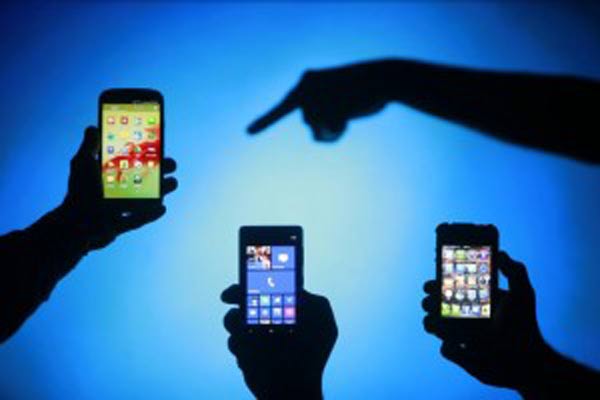
Milan, Italy (BBN)-European Society of Cardiologists has revealed the potential dangers for those wearing cardiac devices, as they may be affected by the electromagnetic interference or EMI by their smartphone.
The study aims to confirm the previous research conducted a decade ago, that examined the potential interference by smartphones on patients with implanted cardiac devices, including implanted cardioverter defibrillators or ICDs, pacemakers and cardiac resynchronization therapy or CRT devices, reports The Silver Ink.
Researchers wanted to find out that the new technology afforded by today’s smartphones might still pose threats to such individuals.
Dr Carsten Lennerz, a resident in the Clinic for Heart and Circulatory Diseases at the German Heart Centre in Munich, Germany and the lead author of the study said, “Pacemakers can mistakenly detect electromagnetic interference (EMI) from smartphones as a cardiac signal, causing them to briefly stop working. This leads to a pause in the cardiac rhythm of the pacing dependent patient and may result in syncope. For implantable cardioverter defibrillators (ICDs) the external signal mimics a life threatening ventricular tachyarrhythmia, leading the ICD to deliver a painful shock.”
The previous research have set the guidelines where the safety distance between phone and cardiac devices must be at 15 to 20 cm, about 6-8 inches.
For the study researchers have exposed 308 patients (147 pacemakers and 161 ICDs) to electromagnetic fields from three common smartphones, Samsung Galaxy 3, Nokia Lumia and HTC One XL. The phones were places on the patient’s skin directly over the cardiac devices.
Lennerz said, “From earlier studies we know that the most vulnerable phases of a call are ringing and connecting to the network, not talking, so it was important to analyze these separately.”
They found that only 1 out of 308 subjects experienced disruptions in the performance of their cardiac devices. Regardless of the low risk, Lennerz warms patients to heed to previous guidelines.
“Interference between smartphones and cardiac devices is uncommon but can occur, so the current recommendations on keeping a safe distance should be upheld.”
Professor Christof Kolb, head of the Department of Electrophysiology at the German Heart Centre and the co-author of the study said, “Nearly everyone uses smartphones and there is the possibility of interference with a cardiac device if you come too close. Patients with a cardiac device can use a smartphone but they should not place it directly over the cardiac device.”
“That means not storing it in a pocket above the cardiac device. They should also hold their smartphone to the ear opposite to the side of the device implant.”
The research is being presented at the joint meeting of the European Heart Rhythm Association or EHRA and the European Society of Cardiology (ESC) at the annual CARDIOSTEM conference in Milan, Italy.
BBN/SK/AD